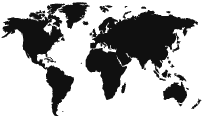The Moving Image Source Calendar is a selective international guide to retrospectives, screenings, festivals, and exhibitions.
Descriptions are drawn from the calendars of the presenting venues.

-
Tatsuya Nakadai
 June 20-July 17, 2008 at
Film Forum
, New York
June 20-July 17, 2008 at
Film Forum
, New York
While his magnetically handsome screen persona probably had him destined for stardom anyway, the career of actor Tatsuya Nakadai (born 1932) skyrocketed: only five years after a blink-of-the-eye walk-through in Seven Samurai, he was carrying Japan's biggest epic ever, The Human Condition. First known in the West for coming in second in spectacular swordfights with Toshiro Mifune, Nakadai would become a taking-on-all-comers action super-star himself, and eventually Kurosawa's lead in Kagemusha and Ran. Early on deciding to regularly play against pretty boy typecasting, Nakadai displayed a range that could encompass the melancholy, intense middle-aged avenger of Harakiri; the Steve McQueen-cool detective of High and Low; the pistol-packing proto-yakuza punk of Yojimbo; and the eyeball-rolling psycho in the cult classic Sword of Doom—all within a four-year period. With his starring roles in bona fide classics by Kurosawa and Kobayashi, and multiple leading parts for masters as disparate in style and subject matter as Naruse, Okamoto, Gosha, Teshigahara, Kinoshita, and the late Kon Ichikawa, Nakadai's career provides a core sample right through the heart of the Golden Age of Japanese Cinema. One of the few Japanese movie stars to attain international fame, at home his electrifying stage presence has made him a theater legend as well—an Eastern Laurence Olivier, memorably starring in, among many others, Hamlet, Othello, Don Quixote, even Driving Miss Daisy. In October 2007, the Japanese government designated him as Bunka Korosha, "a person of distinguished service" to Japanese culture. But with or without a title, Tatsuya Nakadai has been, for over 50 years, one of the world's great actors.
Featured Works:
Black River (Masaki Kobayashi, 1957); Tenchu (Hitokiri) (Mikio Naruse 1957); Conflagration (Kon Ichikawa, 1958); The Human Condition I-III (Masaki Kobayashi, 1959); Odd Obsessio (Kon Ichikawa, 1959); When a Woman Ascends the Stairs (Mikio Naruse, 1960, pictured); Immortal Love (Keisuke Kinoshita, 1961); Yojimbo (Akira Kurosawa, 1961); Harakiri (Masaki Kobayashi, 1962); Sanjuro (Akira Kurosawa, 1962); High and Low (Akira Kurosawa, 1963); Kwaidan (Masaki Kobayashi, 1964); The Face Of Another (Hiroshi Teshigahara, 1966); Sword of Doom (Kihachi Okamoto, 1966); Age of Assassins (Kihachi Okamoto, 1967); Samurai Rebellion (Masaki Kobayashi, 1967); Kill! (Kihachi Okamoto, 1968); Goyokin (Hideo Gosha, 1969); Portrait of Hell (Shiro Toyoda 1969); I Am A Cat (Kon Ichikawa, 1975); Solar Eclipse (Satsuo Yamamoto, 1975); Kagemusha (Akira Kurosawa, 1980); Onimasa (Hideo Gosha, 1982); Ran (Akira Kurosawa, 1985)
Program information:
Related Articles:
A Mirror for Mama-san by Chris Fujiwara posted Jun. 04, 2008
